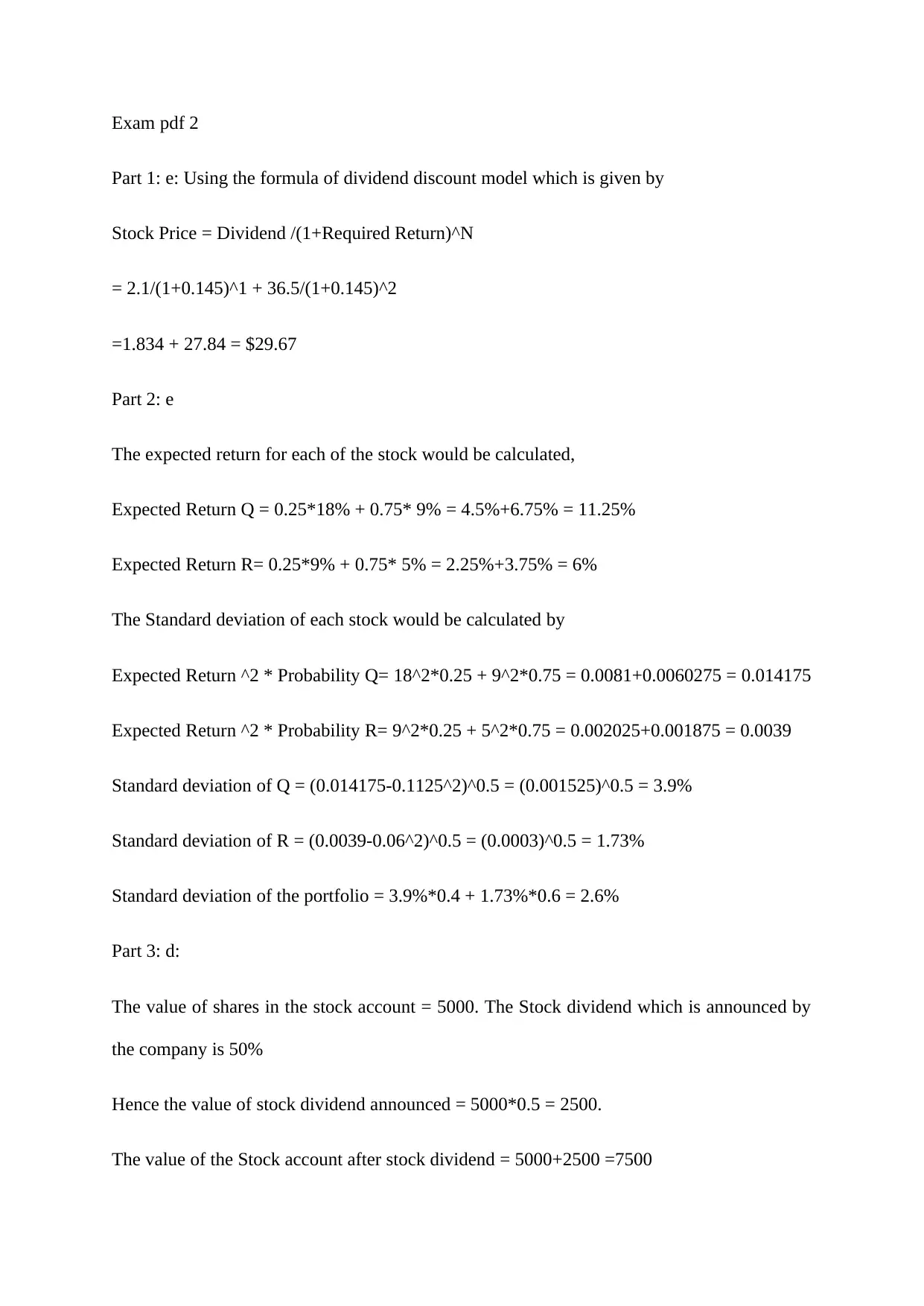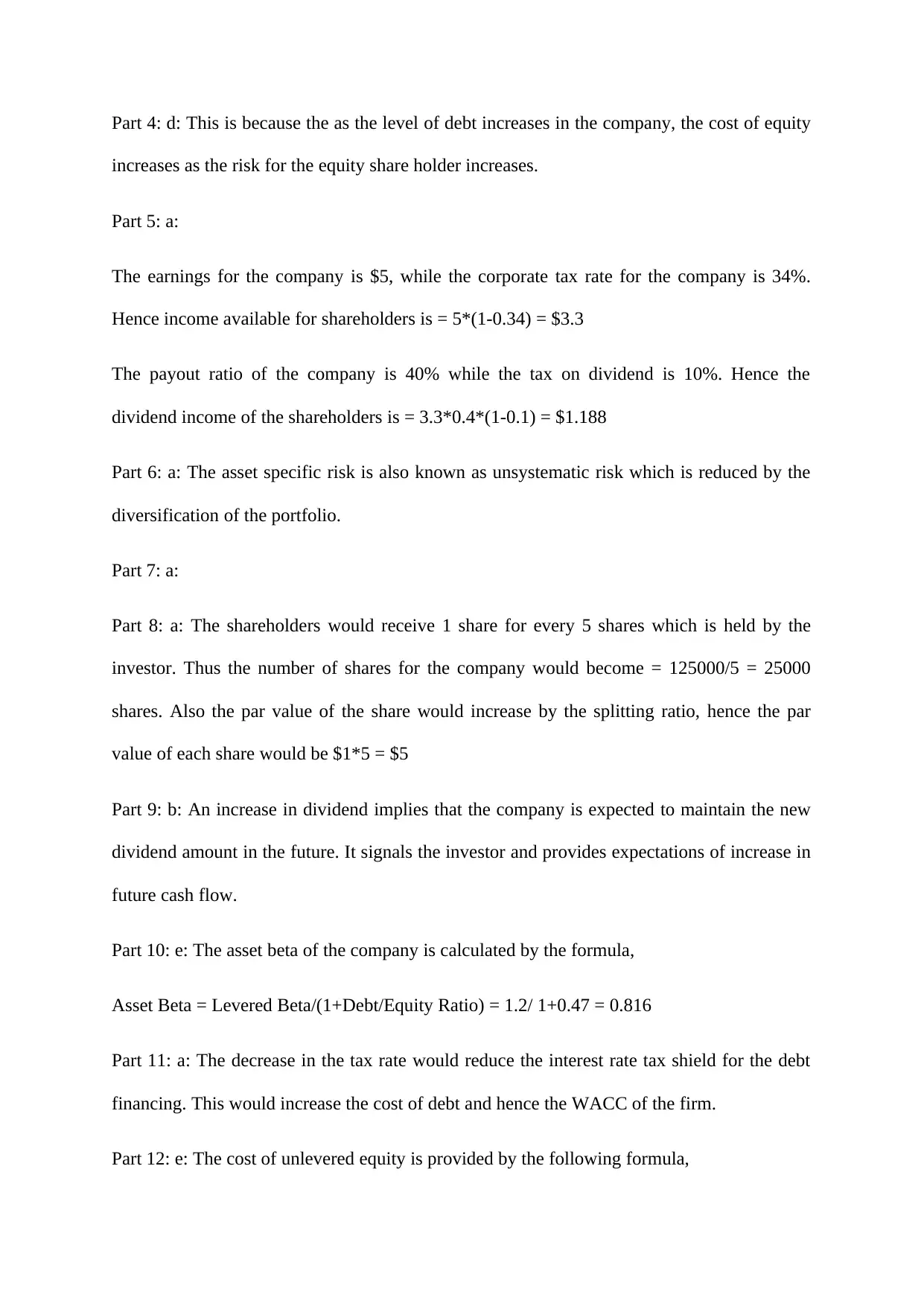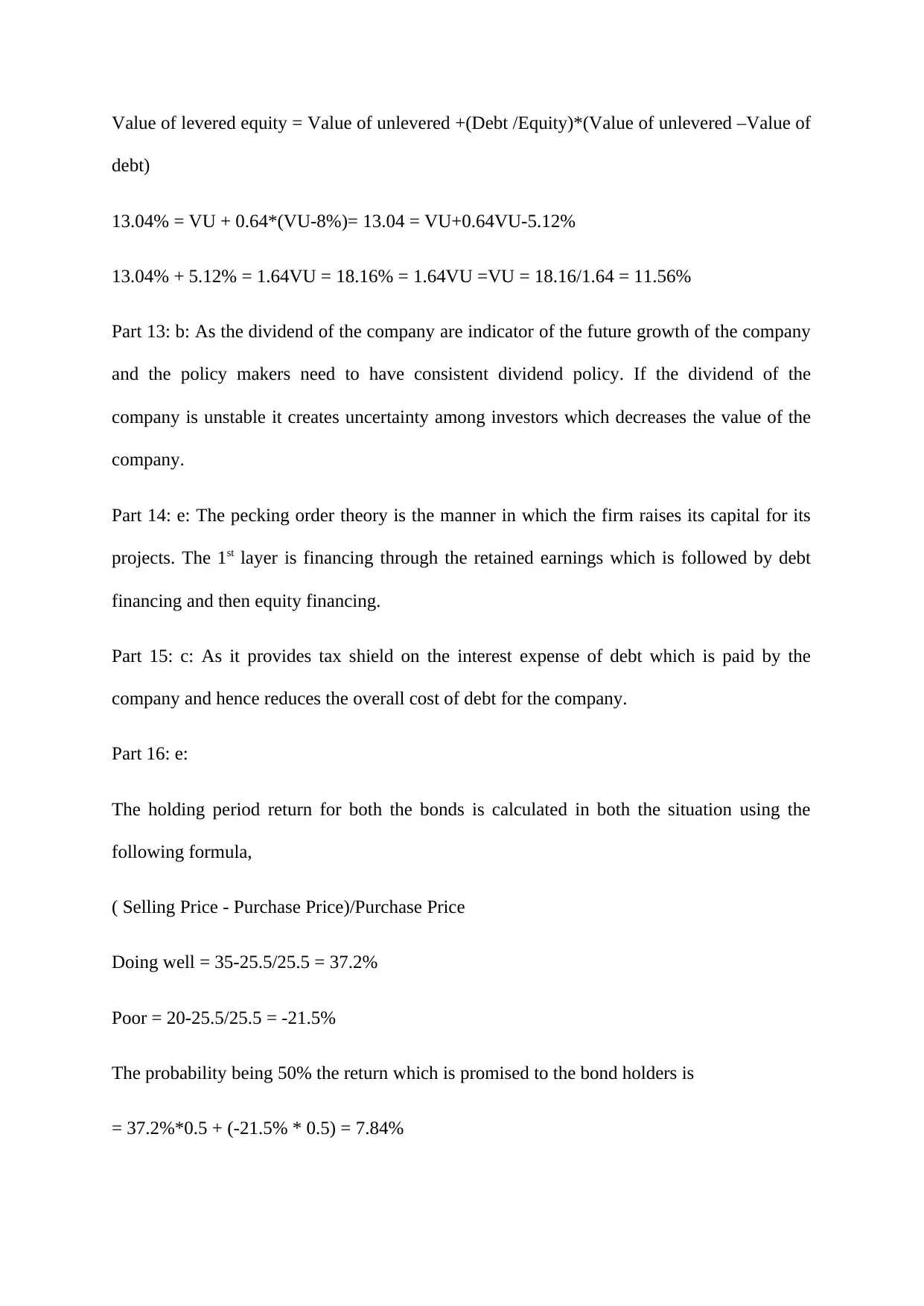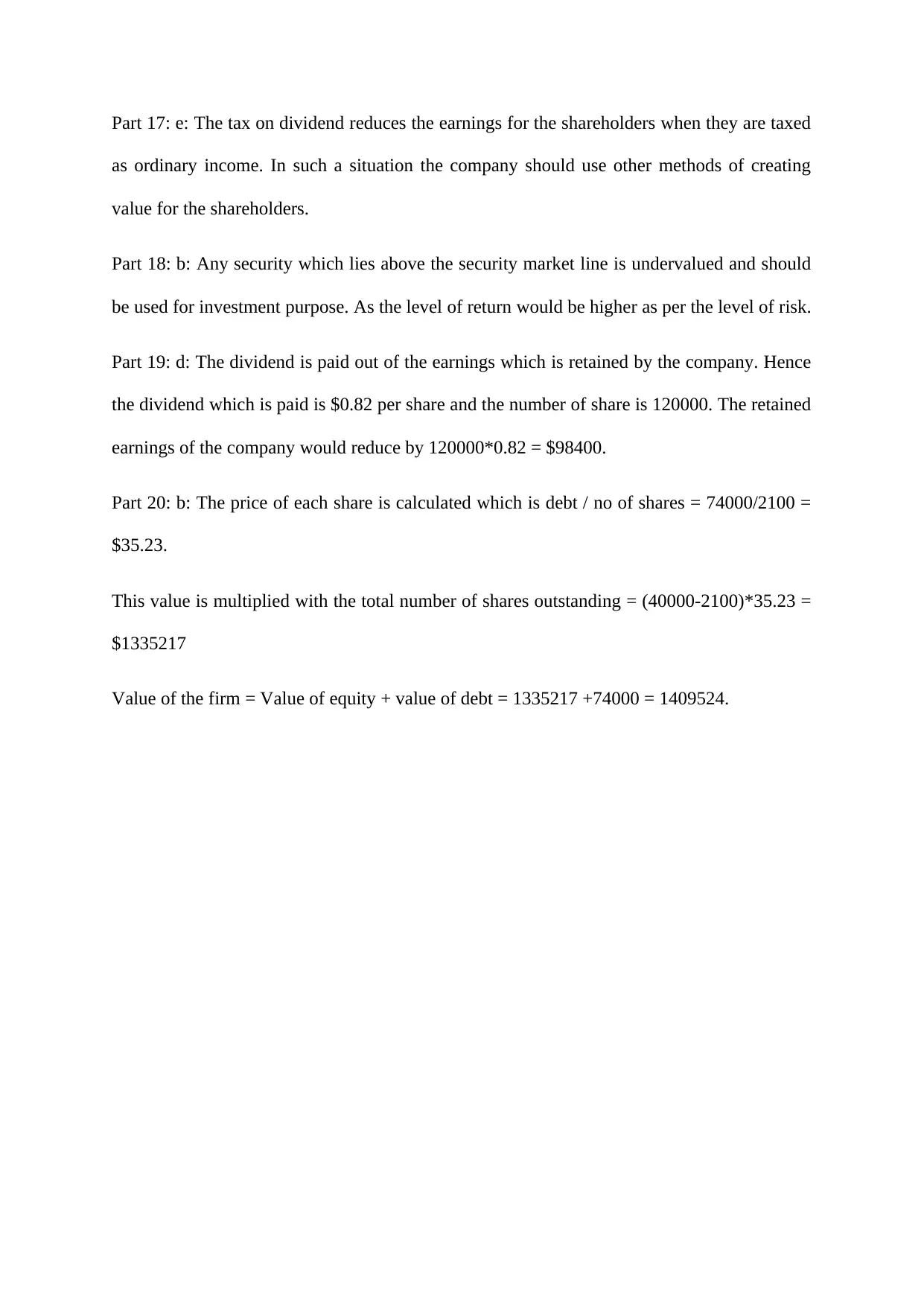FIN701 Spring 2020: Quiz 5, Practice Exam 1 & 2 Solutions
VerifiedAdded on 2022/07/28
|5
|1050
|24
Quiz and Exam
AI Summary
This document provides detailed solutions to a FIN701 quiz and practice exams, covering key concepts in corporate finance. The solutions include calculations for the dividend discount model to determine stock valuation, analysis of expected return and standard deviation for stock portfolios, and explanations of stock dividends and their impact. The document also addresses the relationship between debt and the cost of equity, the effects of stock splits, and the interpretation of dividend signals. Furthermore, the solutions encompass asset beta calculation, the impact of tax rate changes on WACC, the cost of unlevered equity, and the pecking order theory. Additionally, the document explores the benefits of debt financing, the application of the security market line, the impact of dividend payments on retained earnings, and the valuation of a firm. Finally, it includes the holding period return for bonds under various economic scenarios.
1 out of 5








![[object Object]](/_next/static/media/star-bottom.7253800d.svg)